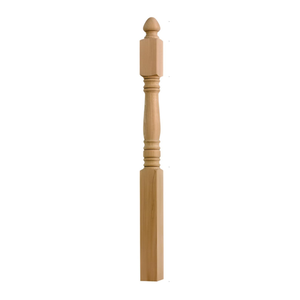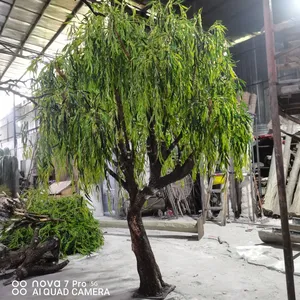
All categories
Featured selections
Trade Assurance
Buyer Central
Help Center
Get the app
Become a supplier

(196 products available)








































A tree trunk column type is divided into several types based on the origin of the tree. These variegation includes tropical hardwood tree trunks, European softwood trunks, and treated trunks.
The trunk of tropical hardwood trees is strong and dense. This means that they are ideal for construction purposes. They are also dark in color, which gives beautiful aesthetics. Common varieties include teak, mahogany, and iroko.
These trunks are lighter compared to tropical hardwood trees. They are also less dense. This makes them easier to work with. Pines and spruces are the common varieties used in making these columns.
These trunks commonly include both hardwoods and softwoods. Chemical treatment protects them from insects and moisture. Most treated trunks come in shades of green or brown. This information is important for a buyer to know when purchasing trunks of trees for aesthetic purposes.
The design of a tree trunk column is naturalistic since it uses raw wood. The creative possibilities vary depending on the thickness and nature of the tree. Smaller trunks can be used to make tree trunk clothes racks and are thus utilized in a more minimalist style. The large trunks create a bold statement. Thus, accentuating an industrial or rustic atmosphere.
Ornamentation on tree trunks also varies widely. There are those left in their original state without modification. Others are carved or etched with patterns. Paint and stain can be added to create a variety of design textures and appearances. It is also possible to mix different species of timber for contrasting looks.
Tree-trunk columns can be used in a lot of different ways. These trunks can be used as structural support elements in commercial buildings. They can also be used in residential structures where they serve both functional and aesthetic purposes.
They are also commonly used in a natural way to support roofs and beams in rustic-style houses.
Tree trunk columns can also be used in hotels and restaurants to evoke a natural and warm feeling. They also promote a sense of sustainability based on their usage.
In landscape design, tree trunks create pergolas and gazebos. They act as posts that support vines and other greenery.
In commercial settings, they are utilized as advertising kiosks. This is common in outdoor markets designed to mimic stalls and booths.
Additionally, tree trunks can be used in children's play areas to make natural climbing structures and balance beams. They can also be used for educational purposes in Nature Based Learning programs.
The trunks can be used to construct fences, gates, and boardwalks in ecological restoration projects. These help in the creation of sturdy and environmentally sensitive structures.
In artistic applications, tree trunks can be used to make sculptures or installations. These raise awareness about deforestation and environmental issues.
In media and pop culture, tree trunks are used for props in TV and film projects. These provide an authentic representation of historical periods or rural settings.
Maintenance and repair of tree trunk column furniture is not as easy as it is with other structures made using metal or cement. A lot of care and work is needed to ensure that these columns remain strong and last for a long time.
Routine cleaning should be used to remove dirt and debris. Avoid harsh chemicals as they may damage the finish of the trunk. Also, soft, damp clothes should be used to clean the trunks.
Users should check regularly for signs of insect infestations. They should also look for decay or mold growth. This is usually common in areas with high humidity. Any early signs of damage should be treated instantly using an appropriate fungicide or insecticide.
Apply a sealer, stain, or protective oil to maintain the trunk's condition. These are commonly called maintenance oils. They also include concentrated products like teak oils. UV inhibitors, moisture barriers, and waterproofing properties are present in these products.
Schedule resealing or re-staining every one to two years. This greatly depends on exposure to elements. Repairing tree trunk columns may include replacing damaged segments or re-stabilizing the structure with brackets or reinforcements. Repairs should always be done by a professional to avoid further damage.
Users should also consider replacing heavily damaged trunks with new ones. This is done all to avoid collapsing and compromising structural integrity.
Tree trunk columns have a lot of benefits. One benefit is that tree trunks are sustainable building materials. They both promote carbon sequestration. This reduces overall greenhouse gas levels in the atmosphere.
The use of tree trunk columns promotes biodiversity by providing habitats for insects, birds, and other wildlife. This is commonly the case when living trees are used.
Tree trunks provide a natural and aesthetically pleasing design that is beneficial for mental health. Natural materials reduce stress and enhance well-being when incorporated into built environments.
They can also result in lower energy costs for heating and cooling. This is because they serve as natural insulation when they are combined with straw bale houses and green roofs.
Tree trunks are injured less and are more effective than metal and concrete columns. They are also more resistant to earthquakes because they can flex. This gives them a higher safety factor in seismically active areas.
Tree trunk columns are also stronger and more durable than other structures. They are also more versatile and can be used in different styles, ranging from rustic to contemporary.
Additionally, tree trunks support local economies. They also promote the use of local forestry practices.
The following are some factors that should be considered when choosing a tree trunk column:
Species
Different species offer different levels of hardness, grain patterns, and colors. Buyers should consider what works best for their style and functional requirements when choosing the species of the column.
Diameter and height
Ideal tree trunk column ideas should come in various sizes. They should range from thin supporters to massive carry beams. Buyers should ensure the trunk they choose meets their design needs. It should also meet structural requirements.
Finishing options
Tree trunk columns come with a variety of finishing options. Some are raw and natural. Others are polished and varnished. Buyers should also consider the variety of finishes available. It will help them prevent creating a tree trunk concrete fence that looks too rustic or too refined for their space.
Maintenance needs
Tree trunk columns need regular maintenance. Avoid exposure to direct sunlight as it can cause fading. They also need the application of preservation products like oils and waxes to ensure they have a long life. Buyers should keep the maintenance needs in mind so that they don't replicate the forests in their spaces.
Height and diameter
Tall trunks make a bold statement. However, they will need more space since they will occupy vertical room. Thin columns take up less floor area. They will still have an impact on height. Buyers should also consider the ratio of the trunk column as it impacts the overall visual coherence.
A1.Living tree trunks can be used to make tree trunk columns. However, they require a lot of work. An example is the roots of the tree must be adequately protected. Additionally, pruning is mandatory to ensure the species's growth is controlled. Living trunks also require irrigation and monitoring so they don't dry out.
A2.Yes. Artificial trunks made of resin or fiberglass are designed to mimic the appearances of real wood. They are ideal for those who don't want to deal with the maintenance of living or natural wood columns.
A3.Yes. They are both sturdy and durable. They can easily bear the weight of roof beams and can serve as load-bearing supports in structures. Moreover, different types of wood provide a variety levels of mechanical strength.
A4.Tree trunk columns have a natural and rustic appearance. This makes them ideal for creating organic, warm atmospheres. Moreover, they offer an earthy contrast to modern industrial materials.